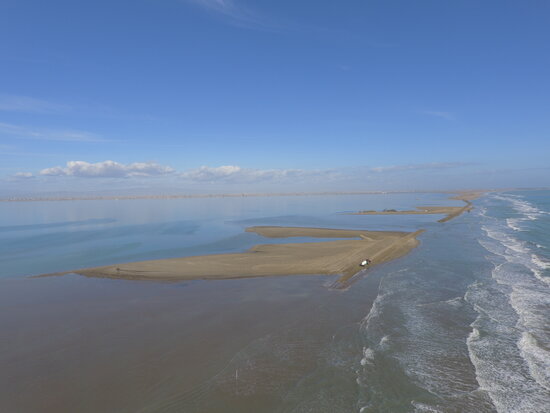Catalonia's recovery continues one year on from Storm Gloria
Damages still remain from extreme weather that swept through Catalonia last year

It was only a year ago that Storm Gloria swept through Catalonia, bringing damage and destruction, as well as taking the lives of four people.
Gloria brought extreme weather for five days from January 19 to 23, 2020, as many areas saw over 400mm of rainfall during the course of the storm as well as strong winds. Hundreds of thousands of school children were affected by closures, whilst mobility issues plagued Catalonia, with roads being cut off all around the country.
In a first assessment done a few days after the fact, it became clear that the cost of the storm would be high.
For instance, in the coastal county of Selva, private and public losses were of 74 million euros. Ripollès county in the Catalan Pyrenees was looking at costs of 1.9 million euros in reparations and the mediterranean county of Maresme was estimated to need 40 million euros in rebuilding.
Exactly a year on, and the recent Storm Filomena has pushed back much of the progress made in the Ebre Delta, while areas near the Tordera river bank, such as Blanes, north of Barcelona, still awaits some financial help.
The Ebre Delta region
During the storm, part of the Ebre river delta in the south of Catalonia flooded, destroying rice fields, while rivers across the countryburst their banks.
The rough weather caused tens of millions of euros of damages, with emergency repair work in the Ebre delta, for example, coming with a price tag of some 3.5 million euros.
Now, the Storm Filomena has battered the landscape once more. Beaches such as Riumar and La Marquesa have now been nearly erased, as sand has been blown away.
The Barra del Trabucador, a 6.5 km long isthmus, was also heavily affected by Filomena’s wrath, with 35% now underwater.
In the summer, the Catalan government had scattered 120,000 cubic meters of earth on the isthmus in order to regenerate it following Gloria; this work has now been partly destroyed.
Members of the local community, which have come together in an entity called Taula del Consens del Delta, said they will hold both Catalan and Spanish authorities accountable for the management of the area and complained of their "inaction" after Gloria, allowing damage to reoccur.
Girona counties
Municipalities in the Girona area especially suffered. For instance the Ter river broke its banks in Girona flooding the Fontajau arena.
In total, the area saw the spending to cover damages made by the storm rise to 100 million euros.
The Tordera river, between the Barcelona and Girona regions, also overflowed and flooded some areas, forcing the authorities to evacuate a hundred people from their homes in the town of Massanes in the evening of January 22, 2020.
The agricultural zone of Baix Ter was also ruined by the storm, as well as part of the crops surrounding the Tordera river near its mouth.
The coastline of the famous Costa Brava, in the northeastern part of the country, was also heavily beaten by the weather.
The municipality of Blanes is still awaiting 1.6 million euros in financial aid for repairs to their drinking water supply made due to Storm Gloria’s impact.
As well as this the area lost two train bridges, which have now been rebuilt but were out of action for ten months.
Despite this, most of the littoral has now healed from the catastrophe it suffered in January, 2020 and some have taken this as an opportunity to start afresh.
Such is the case of the Platja d’Aro municipality, with 500 meters of their boardwalk destroyed and electrical installations damaged,
Instead of just rebuilding the broken part of the passage, the town plans to remodel it in its entirety over the next five to six years.
Barcelona region
The area of Barcelona saw many of its beaches harmed by the weather conditions, including waves up to 7.5 meters high.
In Barcelona, the city’s coastline saw the worst damage in 20 years, as the Barcelona mayor, Ada Colau, called for the area to be declared a “disaster area.”
Many more bridges were also damaged, including the Petroli bridge in Badalona, which will only start to be rebuilt in 2021.
The Llobregat agricultural park reported that 60% of the harvest was lost due to floods from the storm.
Heavy snowfall occurs once again
During the storm, the Pyrenees, as well as other lower parts of Catalonia, faced heavy snowfall especially in Ripollès.
Filomena broke these records with up to 60cm of snow piled up in the western county of Priorat and in the southern Ebre river region.